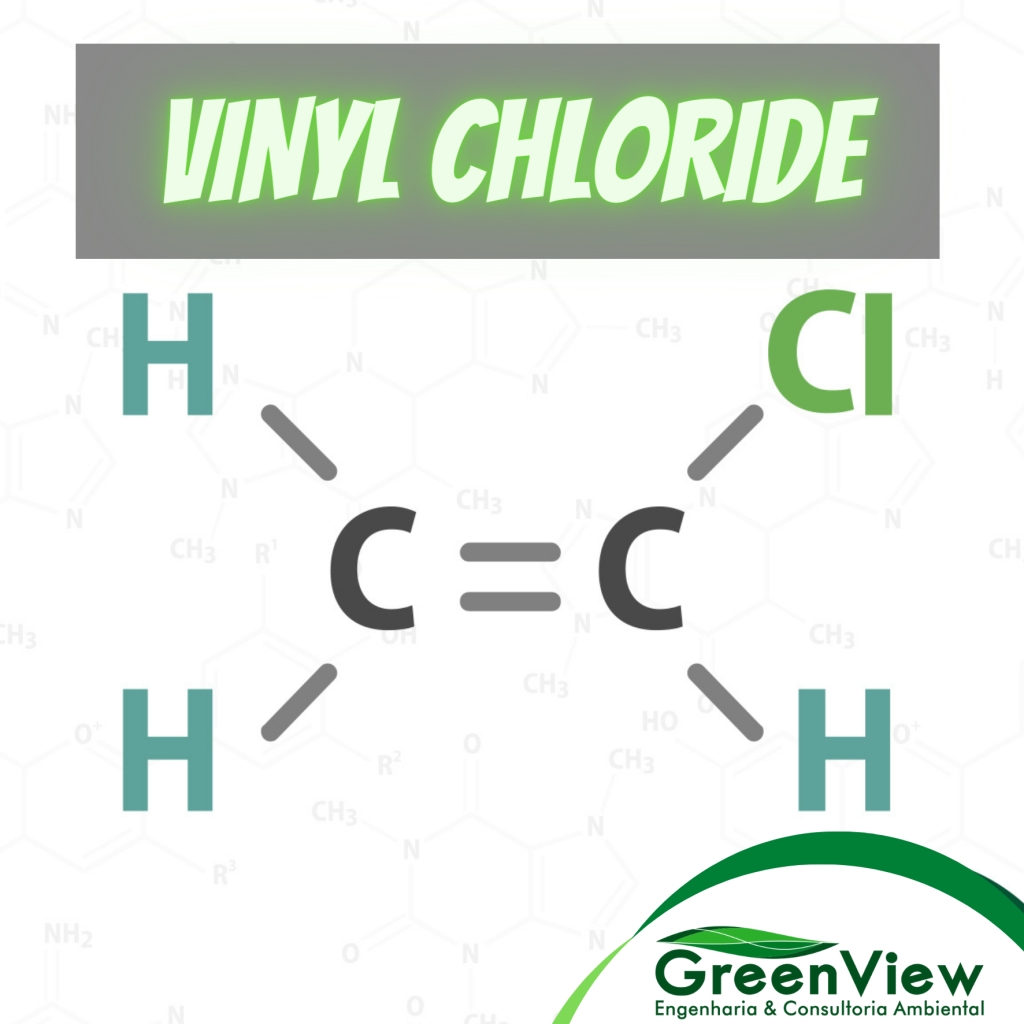Vinyl Chloride, what is it?
Vinyl Chloride is a colorless gas that is highly stable in the absence of light and oxygen. In its liquid form it is stored under pressure or at low temperatures. It can also be called: chloroethene, chloroethylene, monochloroethylene.
Its molecular formula is C2H3Cl and its CAS number is 75-01-4.

Uses of Vinyl Chloride
One of its main uses is in the production of polyvinyl chloride (PVC) resin for making pipes and other plastics as a coating and in the manufacture of chlorinated solvents.
Smaller quantities have been used in car furniture and upholstery, wall coverings, household utensils, and automotive parts.
Behavior in the Environment
It is rarely found in surface water, except in contaminated water, usually at concentrations below 10 μg/L.
Migration of Vinyl Chloride from unplasticized PVC is a possible source of the compound in drinking water.
There are reports of its presence in groundwater as a degradation product of chlorinated solvents deposited in soil.
Concentrations of Vinyl Chloride in ambient air are generally very low, with exposure occurring from the discharge of exhaust gases from factories that manufacture or process or evaporation from areas where chemical waste is stored.
The concentration in ambient air is low, generally less than 3 μg/m3. The half-life in the atmosphere is estimated to be 20 hours.
Human Exposure and Health Effects
The primary route of human exposure to Vinyl Chloride is inhalation.
Occupational exposure by inhalation of high concentrations of the substance over long periods results in narcotic effects, Raynaud's phenomenon (whitening and numbness of the fingers and discomfort from exposure to cold temperatures), hepatocellular changes, development of hepatic angiosarcoma, sclerodermiform skin changes, and acroosteolysis.
Occupational exposure to Vinyl Chloride can occur in workers involved in the production, use, transportation, storage, and disposal of the chemical.
According to the U.S. EPA, acute (short-term) exposure to high levels of vinyl chloride in air has resulted in central nervous system (CNS) effects such as dizziness, drowsiness, and headaches in humans. Chronic (long-term) exposure to vinyl chloride by inhalation and oral exposure in humans resulted in CNS effects and liver damage.
Studies have shown that animals exposed to the compound have neurological, liver, reproductive, developmental, and cancer effects.
The International Agency for Research on Cancer (IARC) classifies Vinyl Chloride as carcinogenic to humans (Group 1), based on epidemiological studies that have shown the compound causes liver cancer.
Source: Ficha de Informação Toxicológica – Companhia Ambiental do Estado de São Paulo (CETESB) / U.S. Environmental Protection Agency (U.S. EPA)
GreenView is an Environmental Consulting Company that performs work related to the Management of Contaminated Sites, carrying out the stages of Phase 1 Environmental Site Assessment, Phase 2 Environmental Site Assessment, Phase 3 Environmental Site Assessment, Human Health Risk Assessment, Environmental Monitoring, Environmental Remediation, and Decommissioning and Rehabilitation Plan, among other services.
Do you need to perform an Environmental Site Assessment on your property or business? Contact GreenView Engenharia & Consultoria Ambiental.
